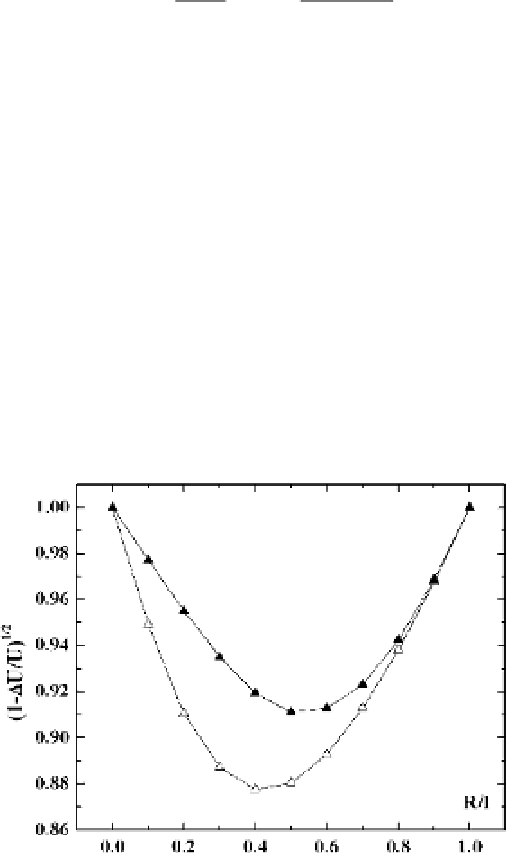Environmental Engineering Reference
In-Depth Information
Let us restrict ourselves to the first expansion term for the potential energy of the
particle field
U
(
R
)
D
z
(
R
)
e
2
/
R
, which for the current charge gives
0
@
p
1
A
N
0
R
5/2
s
e
2
T
i
"
1
5/2
#
2
8
p
π
5
2
R
l
z
D
j
Z
j
Dj
Z
j
(6.36)
and for the dimension of the self-consistent field gives
j
1/5
Z
j
T
i
2/5
N
2/
0
R
1/5
j
Z
j
0.66
N
2/5
0
0.66
l
D
D
.
(6.37)
e
2
0
In particular, with the parameters in the above example (
T
e
D
1eV,
T
i
D
400 K,
the particle radius is
r
0
D
1
μ
m) and for the number density of electrons and ions
10
10
cm
3
of an argon plasma, we find from this formula
l
N
0
D
D
43
μ
m, and
10
9
m
3
we obtain
l
for
N
0
D
D
108
μ
m. All these values are less than the size of
the Coulomb particle field.
Note that a simplified expression (
0) for the particle potential energy ac-
cording to (6.34) allows us to represent the results in an analytic form, but this
simplification leads to an error. Figure 6.2 gives the ratio
Δ
U
D
U
(
R
)/
U
(
R
)atthere-
duced number density of a plasma where the contribution due to free and trapped
ions is comparable. This gives that the error due to the above simplification does
not exceed 10%. Another remark relates to the behavior of the self-consistent field
near its boundary (6.35). Indeed, the above consideration is valid under the condi-
tion
Δ
T
i
, and dependence (6.36) is violated near the boundary (6.35). In
particular, in the case
T
e
j
U
(
R
)
j
T
i
, we have Debye screening in the region
j
U
(
R
)
j
T
e
,
Figure 6.2
Theratioofthecorrection
Δ
U
)
to the particle potential energy in a plasma to
the accurate interaction potential
(
R
or trapped ions (open triangles) dominate at
N
0
r
0
D
100 cm
1
. At this reduced number
density of plasma particles, the contribution
to particle screening due to free and trapped
ions is comparable.
U
(
R
)asa
function of the distance
from the particle for
the versions where free ions (filled triangles)
R


